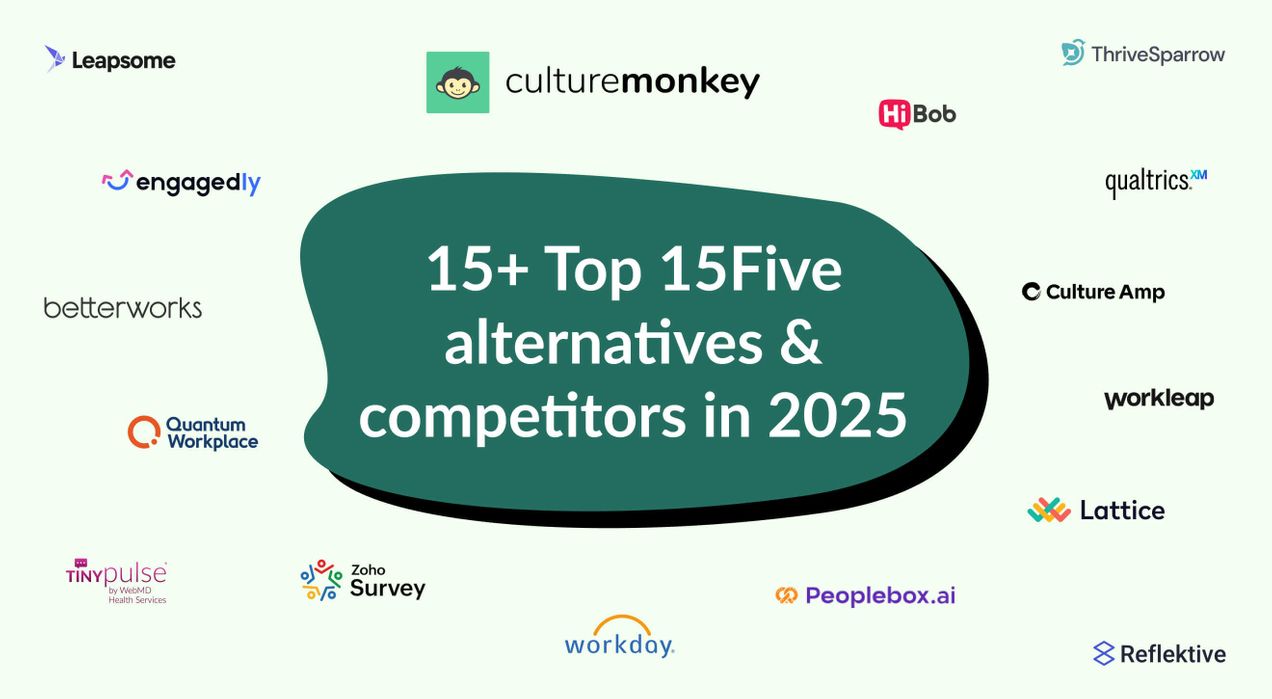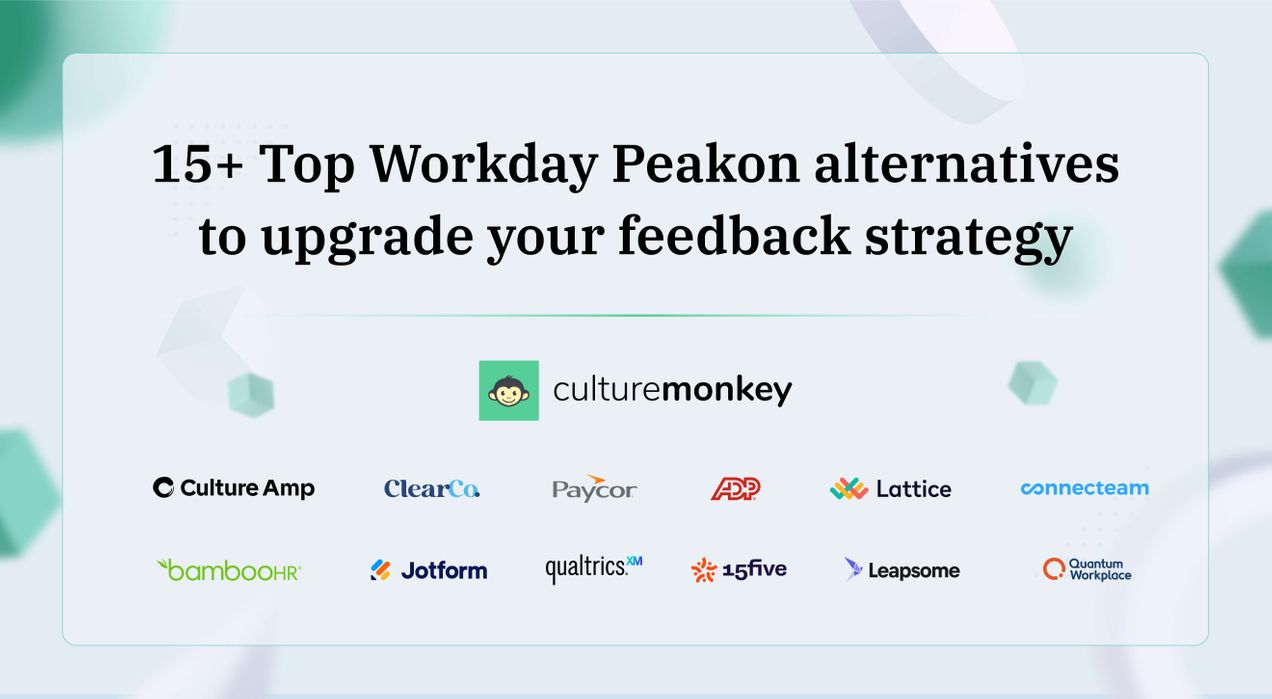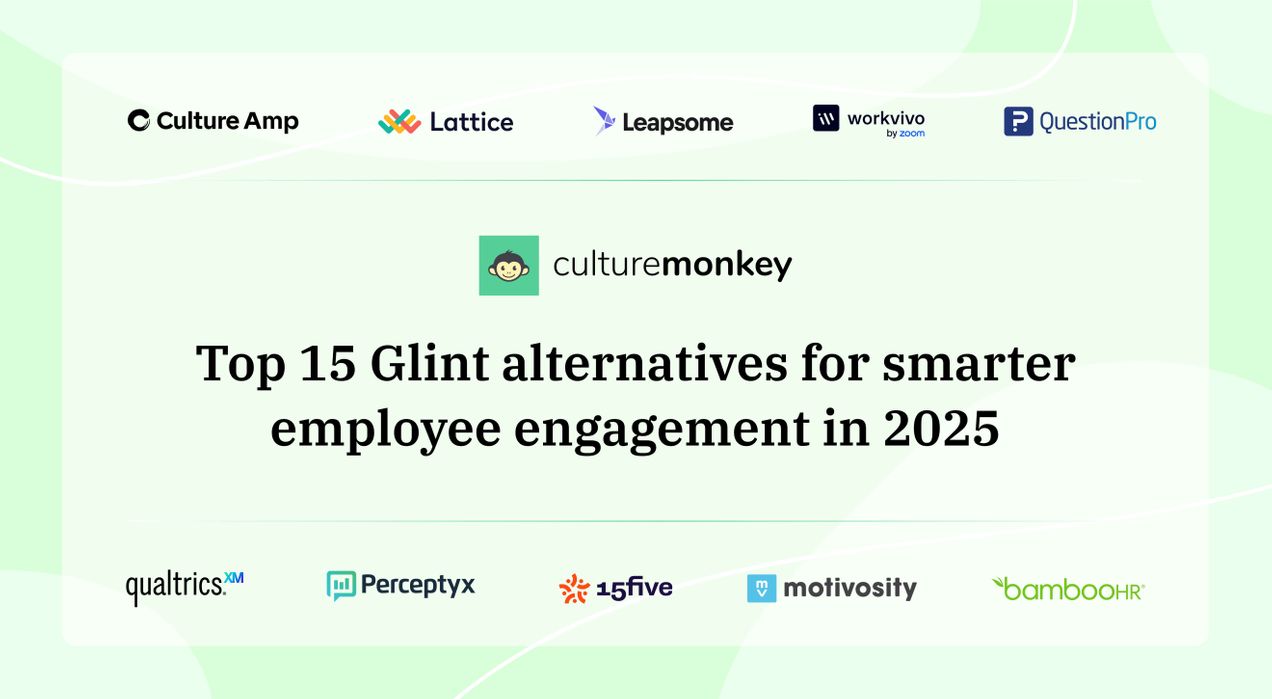Best employee engagement software with Workday integration
Seamlessly run surveys, automate feedback, and gain real-time insights with Workday-connected tools. This guide features the best employee engagement software with Workday integration, including CultureMonkey, to help HR teams deliver timely, data-driven engagement at scale.
Best employee engagement software with Teams integration
Seamlessly run surveys, gather feedback, and drive higher participation without leaving Microsoft Teams. This guide highlights the best employee engagement software with native Teams integration, featuring CultureMonkey alongside other leading tools, to simplify survey delivery for HR and managers.
False accusations at work: How HR can protect both people and policy
Navigating false accusations at work requires HR leaders to balance empathy, clear communication, and thorough investigation. This guide explores the impact of false claims, reasons behind them, and effective strategies to manage such situations while maintaining trust and morale within the team.
Best employee engagement software with Slack integration
Seamlessly run surveys, collect feedback, and boost engagement without leaving Slack. This guide explores the best employee engagement software with native Slack integration—featuring CultureMonkey and other top tools—to streamline participation, ensure anonymity, and drive real-time insights.
Onboarding paperwork: Everything you need to know to make it simple and stress-free
Onboarding paperwork doesn’t have to overwhelm new hires or HR teams. This guide covers essential documents, compliance requirements, and how digital tools, templates, and checklists can streamline the entire process for a smooth, positive onboarding experience.
15+ Best 15Five alternatives and competitors to improve employee feedback in 2025
Looking for 15Five alternatives? Explore a range of platforms offering personalized surveys, actionable insights, and powerful engagement tools. Assess each solution to find the one that best aligns with your organization’s specific objectives and helps foster a more engaged & productive workforce.
Employee engagement survey implementation checklist for enterprises: A complete guide
In 2025, with hybrid teams, evolving expectations, and increasing talent mobility, listening isn’t just a “nice-to-have”—it’s mission-critical. An employee engagement survey implementation checklist ensures you're not just collecting data, but creating momentum for real change.
15+ Best Leapsome alternatives HR leaders trust for feedback and engagement
Looking for alternatives to Leapsome for your engagement survey needs? Explore these 15+ top-rated platforms offering diverse features like customizable surveys, real-time analytics, and actionable insights to enhance engagement. There are solutions tailored to meet your specific requirements.
Top 10 multilingual pulse survey templates for global teams to engage the workforce
Multilingual pulse surveys are short, recurring employee feedback surveys delivered in the native languages of your global workforce. They help capture real-time insights by removing language barriers, ensuring every employee, regardless of location, can share honest, clear, and relevant feedback.
15+ Top Workday Peakon alternatives to upgrade your feedback strategy
Looking for Peakon alternatives? Explore survey platforms with smarter analytics, customizable templates, and real-time action planning. Discover tools that help you capture meaningful feedback and transform employee sentiment into measurable engagement outcomes.
Top 15 Glint alternatives for smarter employee engagement in 2025
Looking for alternatives to Glint for your employee engagement survey needs? Explore our comprehensive list of top alternatives, each offering unique features and functionalities to help you foster a positive work culture and drive employee satisfaction.
20+ Best employee engagement activities in hospitals and healthcare teams in 2025
In today’s high-pressure hospital environments, engagement is the difference between burnout and balance. The stakes are higher, the patient load heavier, and the expectations more intense than ever before. An engaged workforce isn’t just happier; they deliver better outcomes.
Top 15 Officevibe alternatives to boost employee engagement in 2025
Looking for Officevibe alternatives? Discover platforms that go beyond the basics with customizable surveys, deeper analytics, & advanced engagement features. Explore options tailored to your team’s evolving needs, so you can build a more connected, data-driven, & high-performing workplace culture.
Patagonia company culture in action: How HR can apply these values anywhere
High employee engagement is crucial for the success of any brand. But, you might be shocked to learn that 85% of employees at work are either unengaged or actively disengaged. So, it’s high time companies proactively approach employee engagement by focusing on its key aspects.
Employee feedback management solution: 2025 guide to AI-powered listening
Employee expectations have evolved, and fast. In 2025, a once-a-year feedback form won’t cut it. Today’s teams expect continuous conversations, real-time responsiveness, and clear proof of employee development that their voices actually drive change.
Employee trust surveys: How to measure what really drives retention in 2025
An employee trust survey is a structured way to measure how much your team trusts the organization, its leadership, and its overall culture. It’s not just about whether people “like” their leadership team—it’s about understanding how safe, supported, and respected they feel.
150+ Funny work jokes so good, even HR might laugh
Ever noticed how a good laugh can turn a stressful day around? In the workplace, humor isn’t just about cracking jokes—it’s a secret ingredient for a positive, engaged, and high-performing team that just doesn't talk business. Adding a little humor to your workday is no more just a joke anyway.
Team cohesion as a growth driver: How a unified team boosts results
Team cohesion is the degree to which team members feel connected, aligned, and committed to working together toward shared goals. It's not just about getting along or being friendly at work. It's about forming a deep sense of unity that helps people collaborate effectively.
How manager effectiveness shapes company culture and drives employee engagement
Manager effectiveness is the ability of a manager to drive results while supporting, developing, and engaging their team. It’s that sweet spot where performance and people meet, which many strive to improve manager effectiveness. It’s not about micromanaging or being everyone’s best friend.
Team goals that shape culture: Align your people around purpose and performance
Team goals are the shared targets or outcomes a group of employees commits to achieving together. Unlike individual goals, which focus on personal milestones, team goals unite everyone around a common purpose. At their core, team goals serve as a collective agreement on what matters and why.
Designing a team building experience that drives real connection
Designing a team building experience that fosters collaboration and strengthens relationships is key to boosting team performance. Discover strategies to create meaningful, engaging activities that drive real connection.
Bad work culture costs more than you think—here’s how to spot it and turn it around
A bad work culture refers to an environment where unhealthy norms, poor communication, and unaddressed issues shape the daily experience for employees. It’s not always about loud outbursts or open conflict—sometimes, it’s the quiet tension, lack of support, or the feeling that speaking up is risky.
What can you learn from Microsoft’s company culture: Key takeaways for leaders
Microsoft’s culture of growth, diversity, and innovation—championed by Satya Nadella—boosts employee satisfaction and drives success. Learn how to revamp your company culture using insights from their approach.
15 Benefits of internal hiring: How smart companies win from within
Internal hiring is when a company fills a job vacancy by promoting or transferring an existing employee rather than recruiting someone new from outside. Instead of advertising widely or searching externally, the business looks inward to find the right fit.

























